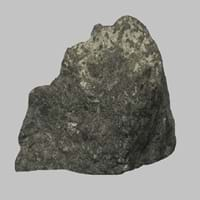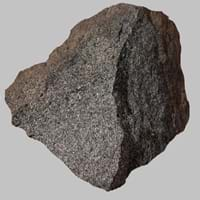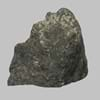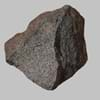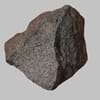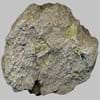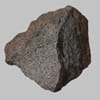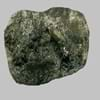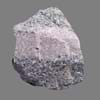Phonolite and Gabbro
Definition
Definition
Phonolite is an uncommon extrusive igneous rock volcanic rock of intermediate chemical composition between felsic and mafic
Gabbro is an intrusive igneous rock which is chemically equivalent to plutonic Basalt
History
Origin
Unknown
Germany
Discoverer
Unknown
Christian Leopold von Buch
Etymology
From the Greek meaning sounding stone because of the metallic sound it produces if an unfractured plate is hit
From Latin glaber bare, smooth, bald
Class
Igneous Rocks
Igneous Rocks
Sub-Class
Durable Rock, Medium Hardness Rock
Durable Rock, Hard Rock
Family
Group
Not Applicable
Plutonic
Other Categories
Fine Grained Rock, Opaque Rock
Coarse Grained Rock, Opaque Rock
Texture
Texture
Granular
Phaneritic
Color
Brown, Buff, Cream, Green, Grey, Pink, White
Dark Grey to Black
Maintenance
Less
Less
Durability
Durable
Durable
Water Resistant
Yes
Yes
Scratch Resistant
Yes
Yes
Stain Resistant
Yes
Yes
Wind Resistant
No
Yes
Acid Resistant
Yes
Yes
Appearance
Banded and Foilated
Veined and Shiny
Uses
Architecture
Interior Uses
Countertops, Decorative Aggregates, Flooring, Homes
Countertops, Decorative Aggregates, Homes, Interior Decoration
Exterior Uses
As Building Stone, As Facing Stone, Garden Decoration, Office Buildings, Paving Stone
As Building Stone, As Facing Stone, Garden Decoration, Office Buildings, Paving Stone
Other Architectural Uses
Curbing
Curbing
Industry
Construction Industry
As Dimension Stone, Cement Manufacture, Construction Aggregate, for Road Aggregate, Landscaping, Making natural cement, Manufacture of Magnesium and Dolomite Refractories, Production of Glass and Ceramics
As Dimension Stone, Building houses or walls, Cement Manufacture, Construction Aggregate, for Road Aggregate
Medical Industry
Not Yet Used
Not Yet Used
Antiquity Uses
Artifacts, Monuments, Sculpture
Artifacts, Monuments, Sculpture
Other Uses
Commercial Uses
Cemetery Markers, Creating Artwork
Cemetery Markers, Commemorative Tablets, Laboratory bench tops, Jewelry, Sea Defence, Tombstones
Types
Types
Kenyte
Not Available
Features
Application of acids on the surface causes cloudy frosting, Available in Lots of Colors and Patterns, Dissolves in hydrochloric acid, Is one of the oldest rock
Smooth to touch
Archaeological Significance
Monuments
Used
Used
Famous Monuments
Data Not Available
Data Not Available
Sculpture
Used
Used
Famous Sculptures
Data Not Available
Data Not Available
Pictographs
Used
Not Used
Petroglyphs
Used
Not Used
Figurines
Used
Used
Fossils
Absent
Absent
Formation
Formation
Phonolite are formed due to alkaline igneous activities and are generally formed in thick continental crustal areas or in Cordilleran subduction zones.
Gabbro, a mafic rock, forms due to cooling and crystallization of magma underneath Earth's surface.
Composition
Mineral Content
Albite, Amphibole, Biotite, Cancrinite, Feldspar, Hornblende, Plagioclase, Pyroxene, Sodalite
Augite, Olivine, Plagioclase, Pyroxene
Compound Content
Aluminium Oxide, CaO, Iron(III) Oxide, FeO, Potassium Oxide, MgO, MnO, Sodium Oxide, Phosphorus Pentoxide, Silicon Dioxide, Titanium Dioxide
Aluminium Oxide, CaO, Chromium(III) Oxide, Iron(III) Oxide, Potassium Oxide, MgO, Sodium Oxide, Silicon Dioxide, Sulfur Trioxide
Transformation
Metamorphism
Yes
Yes
Types of Metamorphism
Contact Metamorphism
Impact Metamorphism
Weathering
Yes
Yes
Types of Weathering
Chemical Weathering, Mechanical Weathering
Chemical Weathering
Erosion
Yes
Yes
Types of Erosion
Chemical Erosion, Coastal Erosion, Water Erosion, Wind Erosion
Coastal Erosion
Properties
Physical Properties
Hardness
5.5-6
7
Grain Size
Fine Grained
Coarse Grained
Fracture
Conchoidal to Uneven
Conchoidal
Streak
White
Black
Porosity
Less Porous
Highly Porous
Luster
Greasy to Dull
Not Available
Compressive Strength
150.00 N/mm2
14
225.00 N/mm2
7
Cleavage
Poor
Not Available
Toughness
Not Available
1.6
Specific Gravity
2.6
2.86-2.87
Transparency
Translucent to Opaque
Opaque
Density
2.6 g/cm3
2.7-3.3 g/cm3
Thermal Properties
Resistance
Heat Resistant, Impact Resistant, Wear Resistant
Impact Resistant, Pressure Resistant, Wear Resistant
Reserves
Deposits in Eastern Continents
Asia
Indonesia, Iran, Russia, Saudi Arabia, Sri Lanka, Taiwan, Thailand, Turkey, Turkmenistan, Vietnam
India, Russia
Africa
Angola, Egypt, Madagascar, Namibia, Nigeria, South Africa
South Africa
Europe
Andorra, Finland, France, Germany, Great Britain, Italy, Norway, Portugal, Spain, Sweden
Germany, Greece, Italy, Scotland, Turkey
Others
Greenland
Greenland
Deposits in Western Continents
North America
Canada, USA
Canada, USA
South America
Brazil, Chile, Colombia, Uruguay, Venezuela
Brazil, Colombia, Venezuela
Deposits in Oceania Continent
Australia
New Zealand, Queensland, South Australia, Tasmania, Western Australia
New Zealand, Queensland
All about Phonolite and Gabbro Properties
Know all about Phonolite and Gabbro properties here. All properties of rocks are important as they define the type of rock and its application. Phonolite and Gabbro belong to Igneous Rocks.Texture of Phonolite is Granular whereas that of Gabbro is Phaneritic. Phonolite appears Banded and Foilated and Gabbro appears Veined and Shiny. The luster of Phonolite is greasy to dull while that of Gabbro is not available. Phonolite is available in brown, buff, cream, green, grey, pink, white colors whereas Gabbro is available in dark grey to black colors. The commercial uses of Phonolite are cemetery markers, creating artwork and that of Gabbro are cemetery markers, commemorative tablets, laboratory bench tops, jewelry, sea defence, tombstones.
|
||
|
||
|
